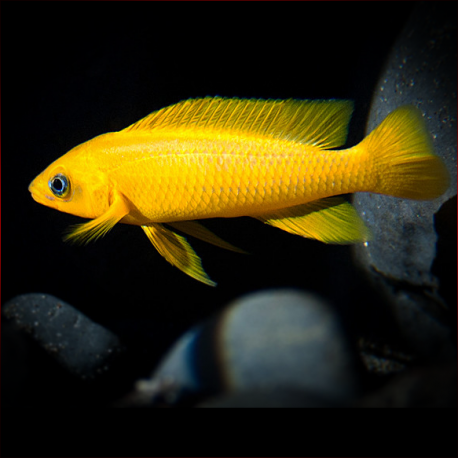More info
Datasheet
| Minimum Tank Size | 70 litres / 18.49 US gallons |
| Maximum Size | 10.0cm / 3.94inches |
| Temperature | 23°C / 73.40°F - 27°C / 80.60°F |
| Hardness | 8-25ºdH |
| pH | 7.5-9.0 |
General Description
One of the most popular Tanganyikan species in the hobby, the Lemon Cichlid (Neolamprologus Leleupi) is visually striking, but its maintenance can be challenging due to its aggressive behavior towards conspecifics and sensitivity to water conditions. This species exhibits weak pair bonding during breeding in aquariums, reflecting its solitary nature in the wild. Variations include the darker N. leleupi melas subspecies and a silvery form rarely seen in captivity.
Aquarium Setup
For a Lemon Cichlid tank setup, a minimum of 70 liters is recommended with a pH range of 7.5-9.0, hardness of 8-25°dH, and temperature between 23-27°C. Sand substrate is ideal, while rockwork formations should create numerous caves and hiding spots. Requiring high water quality, this species thrives in setups mimicking its rocky shoreline habitat in Lake Tanganyika.
Behaviour
Lemon Cichlids are aggressive and territorial, especially during breeding. While they can coexist with other Tanganyikan cichlids of similar size, they should not be housed with boisterous species like Mbuna. Maintaining only a single pair is recommended unless the tank is exceptionally large to accommodate multiple territories. Conspecific aggression is a significant concern, necessitating careful tankmate selection.
Feeding and Diet
The common diet of Lemon Cichlids should consist primarily of live and frozen foods, with occasional dried foods and a supplement of vegetable matter like spirulina flakes. Maintaining a varied diet is essential for their overall health and vibrancy.
Reproduction & Dimorphism
Breeding Lemon Cichlids requires patience, with bi-parental cave spawning being the norm. Pair bonding can take over a year, and removal of excess individuals from the tank is crucial to avoid aggression. The complex spawning process involves secretive egg-laying, followed by extensive brood care. Sexual dimorphism is challenging to discern externally, but adult males tend to grow larger than females.
Habitat and Distribution
Endemic to the southern region of Lake Tanganyika, Lemon Cichlids inhabit rocky areas along the shoreline. Their distribution within this area is relatively expansive. The species thrives in the rocky landscapes typical of its native habitat, showcasing their adaptation to specific ecological niches within the lake.

